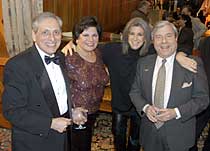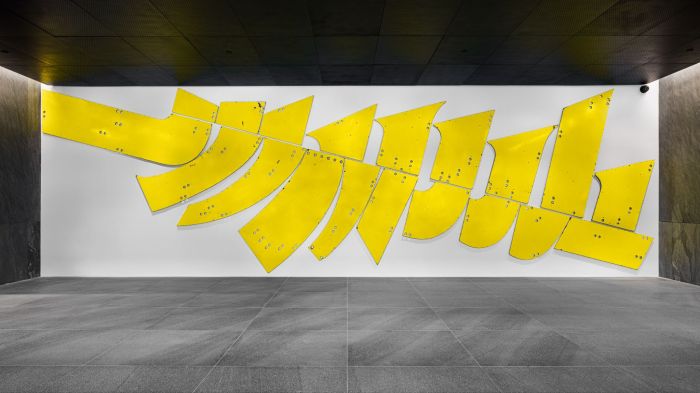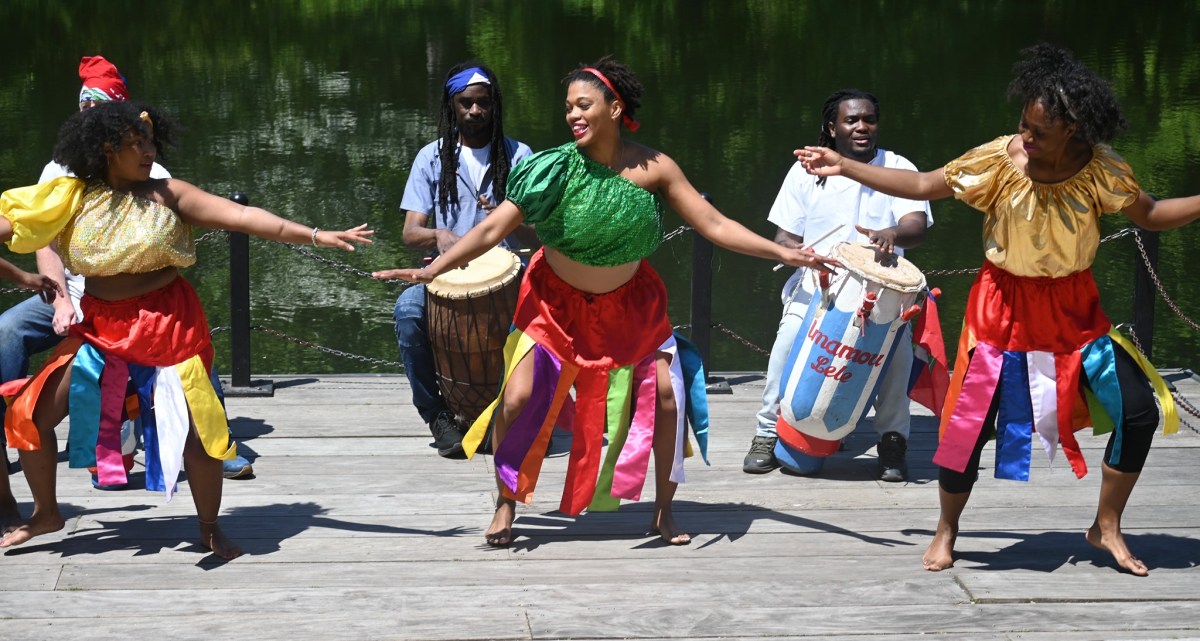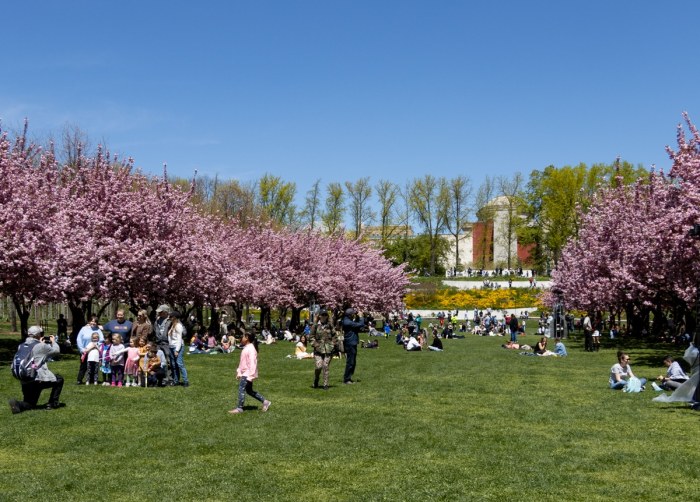Drive down Fifth Avenue in Park Slope,
near Prospect Avenue, and you can’t help but notice the tremendous
four-story Victorian structure looming over the Prospect Expressway.
Standing out against the sleepy row houses that surround it,
the 114-year-old Grand Prospect Hall is steeped in both history
and mystery because most of us don’t know what goes on there.
"Unless you’re invited to a wedding or Christmas party here,
you don’t get to come," says Michael Halkias, who has owned
the hall since 1984.
But that’s all changing.
As of Jan. 6, the Oak Room Restaurant and Supper Club at the
Grand Prospect Hall became, according to Halkias, the finest
dinner and dancing spot, as well as the only extant Oak Room
(besides the one at the Algonquin Hotel) in New York City.
Halkias, who claims to have been 35 for many years with a wink,
bought the building in 1984. Before that, he says, he was "running
around happily, sleeping as much as I wanted before I enslaved
myself to Grand Prospect Hall," which has taken 20 years
to renovate. When he bought it, most of the walls were painted
black and there were holes in the roof and barrels in some of
the rooms. All the molding had been stripped off the walls, there
were drop ceilings, and the chandeliers were gone, recalls Halkias.
But the Grand Prospect Hall has been restored to its former grandeur.
"It’s a one of a kind," says Halkias. The hall was
built in 1892 by Brooklyn civic and social leaders, and then
rebuilt in 1903 after a fire. Many celebrity patrons have visited,
including gangster Al Capone, dancer Fred Astaire and opera singer
Enrico Caruso, and movies such as "The Cotton Club,"
"Prizzi’s Honor" and "The Royal Tenenbaums"
have filmed scenes there.
The building, which is listed on the National Register of Historic
Places, is certainly cinematic. There are 12 rooms, from the
Grand Ballroom, which seats 2,000, to the speakeasy where Capone
is rumored to have received his famous scar. There’s even a 14-lane
bowling alley in the basement. Rococo decor abounds, with 23.75-carat
gold leaf on the ornate stairway railings, crown molding painted
in shades of sherbet – tangerine, pistachio and strawberry –
on the ceiling.
The Grand Ballroom was once a German opera house, covered in
dark paint. Now the 80-foot by 130-foot room, with 45-foot ceilings,
a balcony and a vaudeville stage is completely restored. The
40-foot by 130-foot skylight room next door retains its original
tin ceilings and walls, and opens onto a brand-new atrium with
granite floors that sits above the gardens.
There’s a dining area called "the Chopin room" in homage
to the building’s earlier life as a Polish social club. A French
birdcage-style Otis elevator – "the first elevator in Brooklyn,"
boasts Halkias’ right-hand man, Artie Wassif – brings visitors
to the third-floor Rainbow Room, once a Masonic temple, with
magnificent views of Downtown Brooklyn, Manhattan and the Statue
of Liberty.
Even if the Grand Prospect Hall is ultra-Brooklyn, it retains
the slightest air of Miami inside.
Asked about the bright colors, Wassif replies, "We’re in
the happy business." (Until now, Halkias’ primary business
has been weddings for the countless ethnic groups in Brooklyn.)
The Oak Room certainly adds to that happiness. Split into two
parts, the Oak Room Bar and Grill, in what was once the women’s
dining room, and the Oak Room Supper Club, in the former men’s
dining room (it was built in the Victorian era, after all), both
rooms are paneled in shiny, tiger oak, visible only after Halkias
and his employees scraped off many thick layers of paint.
The 60-seat bar and grill, open for cocktails and casual dining,
is open daily from 11:30 am to 2 am, and with happy hour from
4 pm to 6 pm. The 120-seat supper club offers a more formal dining
area, dancing to live music Monday through Saturday, and is open
for Sunday brunch, as well.
"You can do anything here but sleep," says Halkias.
Artisans from the "old countries," as he calls them,
are employed for the careful gild work and fine ornamentation
that Halkias has recreated or restored. But this new endeavor
bridges old world Brooklyn with new, the elite with the middle
class. Thanks to the Oak Room Supper Club, you don’t need to
rent one of their majestic rooms in order to experience the splendor.
Turkish-born chef Michel Aytekin has created an international
fusion menu that reflects not only the clientele but the multi-ethnic
workforce, including Halkias, who was born in America but spent
many years in his family’s native Greece. Entrees range from
$19 to $29, and include favorites like paella and filet mignon.
The menu will vary by season.
Halkias said this was the right time to reopen the Oak Room.
As the boundaries of Park Slope continue to expand, and the wave
of amelioration from the Brooklyn Academy of Music and the downtown
arts scene washes over south and central Brooklyn, Prospect Avenue
– which doesn’t look quite as polished as its northern neighbors
– is bound to improve.
And by reopening the supper club, where couples can dine and
dance, Halkias makes the Grand Prospect Hall accessible to all
of Kings County, peeling some of the mystery away.
"Chances are," the Grand Prospect Hall brochure states,
"you have seen us in your dreams." With the advent
of the Oak Room, Brooklynites can see it in reality.
The Oak Room Restaurant & Supper
Club is at the Grand Prospect Hall, 263 Prospect Ave. between
Fifth and Sixth avenues in Park Slope. Entrees: $19 to $29. The
Oak Room accepts American Express, MasterCard and Visa. For more
information, call (718) 788-0400 or visit the Web site at www.oakroomrestaurant.com
or www.grandprospecthall.com.























